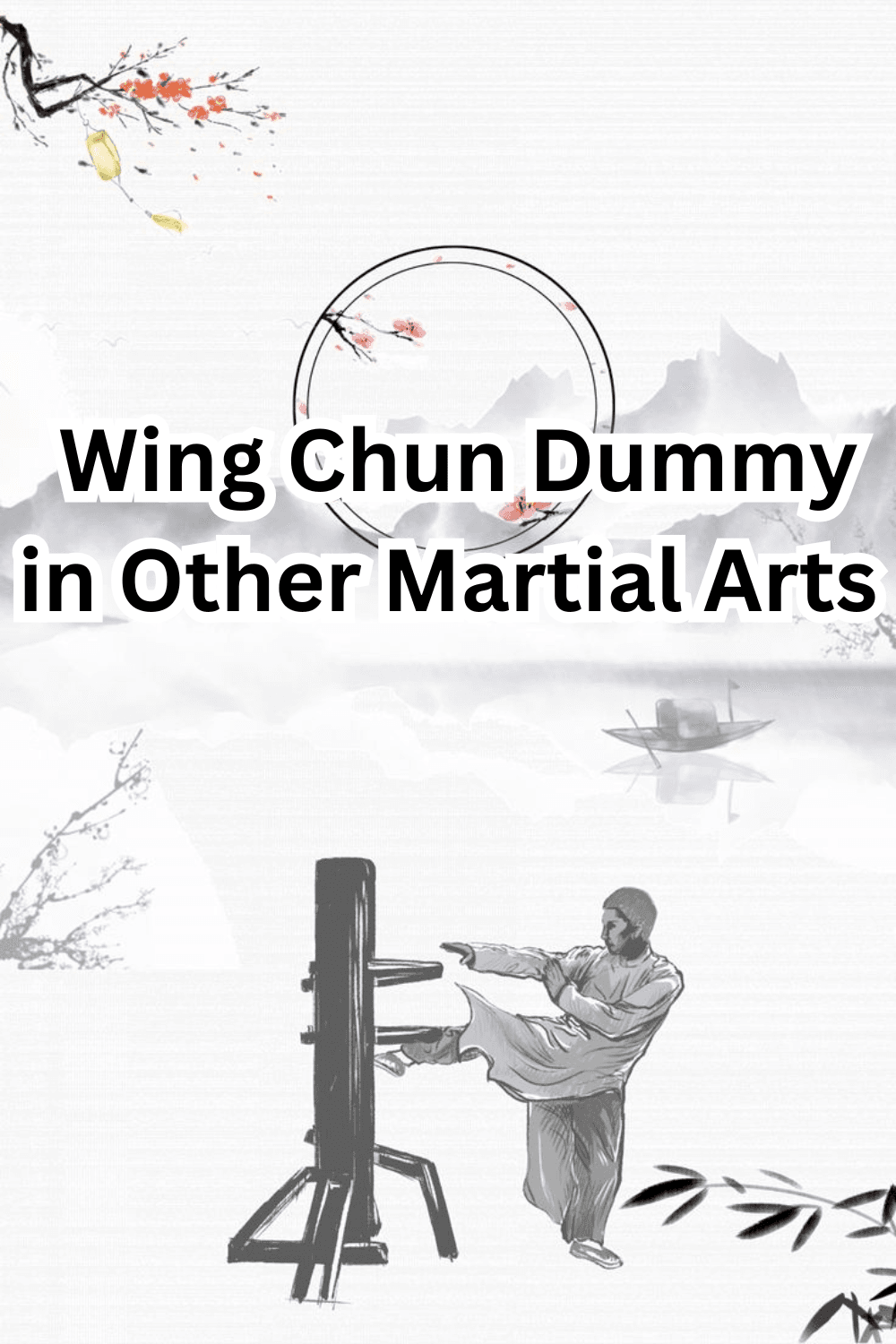Punching is a fundamental aspect of martial arts, serving as a primary method of attack and defense across numerous disciplines.
The significance of a well-executed punch extends beyond mere physical impact; it embodies principles of strategy, timing, and biomechanics.
Each martial art has meticulously developed its own unique punching techniques, reflecting the diverse philosophies and combat strategies inherent to each style.
In this exploration, we will delve into the distinct characteristics of the Wing Chun punch and the Karate punch, two techniques renowned for their efficacy and precision.
Wing Chun, a Chinese martial art, emphasizes close-range combat and rapid, successive strikes.
Its punches are designed to be swift and direct, often delivered from a vertical fist position
On the other hand, Karate, originating from Okinawa, Japan, focuses on powerful, linear strikes.
Its punches are noted for their explosive force and utilize full body mechanics to maximize impact.
Beyond Wing Chun and Karate, other martial arts such as Boxing, Muay Thai, and Taekwondo offer their own unique approaches to punching.
Boxing, for instance, prioritizes hand speed, accuracy, and combinations, with punches like the jab, cross, and hook forming the core of its offensive tactics.
Muay Thai, known as the “Art of Eight Limbs,” incorporates punches alongside elbows, knees, and kicks, with an emphasis on clinch work and powerful, short-range blows.
Taekwondo, predominantly a kicking art, nonetheless includes punches that are fast and often delivered in sequences to set up other techniques.
This blog aims to compare these diverse punching techniques, highlighting the distinctive elements that set them apart.
By examining the mechanics, strategies, and applications of punches in Wing Chun, Karate, and other martial arts.
we can gain a deeper understanding of the intricate art of striking and the varied approaches to mastering this essential combat skill.
The Wing Chun Punch: Mechanics and Philosophy
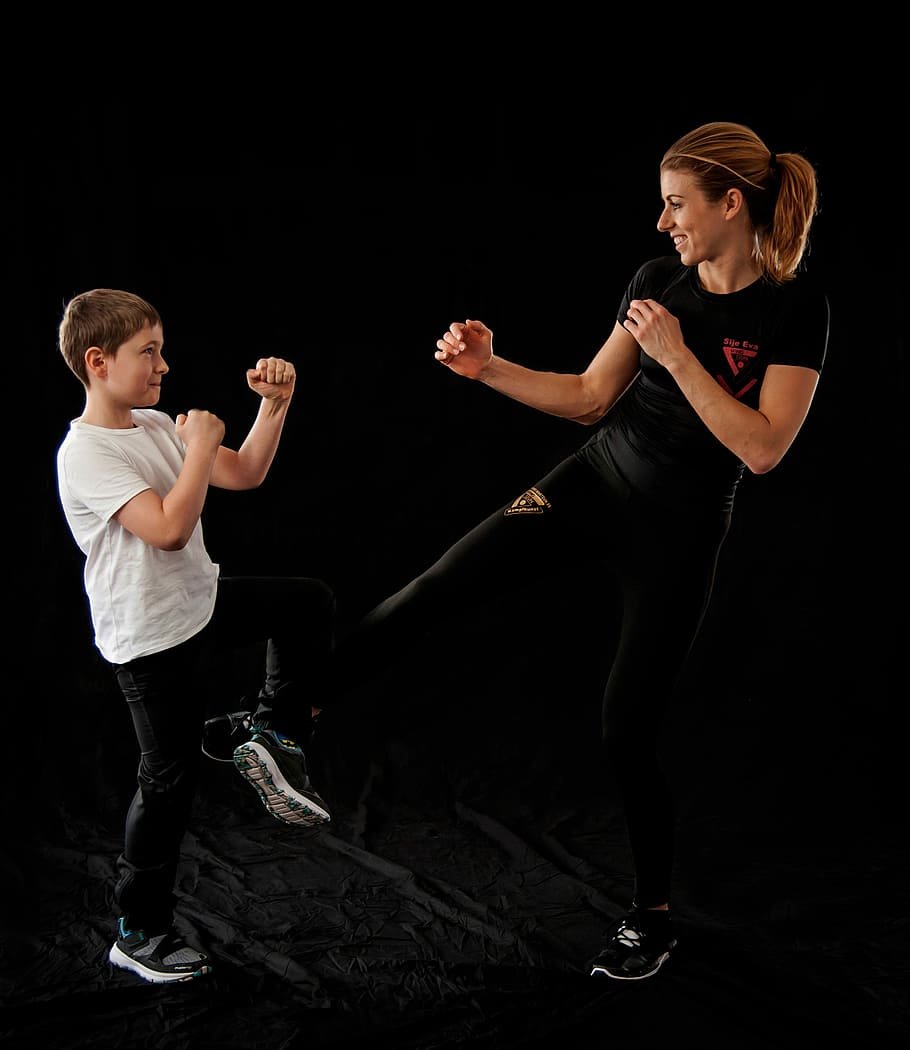
The Wing Chun punch, often referred to as the ‘straight punch’ or ‘chain punch,’ is distinguished by its emphasis on simplicity and efficiency.
At its core, the mechanics of this punch prioritize directness and minimal movement, embodying the principle of economy of motion.
Unlike other martial arts techniques that may rely on circular or arcing motions, the Wing Chun punch travels along a straight, linear path.
ensuring that the energy is delivered swiftly and directly to the target.
Central to the Wing Chun punch is the concept of the centerline theory.
This theory posits that the most effective and efficient way to attack and defend is by controlling and attacking along the centerline of one’s body.
By focusing on this imaginary vertical line that bisects the body, practitioners are able to execute strikes that are both powerful and difficult to counter.
This focus on the centerline also allows for simultaneous attack and defense, a hallmark of Wing Chun’s strategic approach.
Another key aspect of the Wing Chun punch is the practice of rapid, successive strikes, commonly known as ‘chain punches.’
This technique involves delivering a series of quick, consecutive punches that aim to overwhelm the opponent.
The rapidity and continuity of these strikes make it challenging for the opponent to recover or mount a counterattack, providing a significant tactical advantage.
Practitioners are trained to generate power through relaxed, flowing movements rather than brute strength, allowing for sustained and efficient striking.
The philosophy behind the Wing Chun punch is deeply rooted in the art’s overall approach to combat.
It emphasizes directness, efficiency, and adaptability, reflecting the broader principles of Wing Chun itself.
By focusing on economy of motion and the centerline theory, practitioners are able to maximize their effectiveness in both offensive and defensive scenarios.
This strategic depth, combined with the physical mechanics of the punch, makes the Wing Chun punch a distinctive and formidable technique within the realm of martial arts.
The Karate Punch: Mechanics and Philosophy

The Karate punch, particularly the ‘reverse punch’ or ‘gyaku-zuki,’ is a fundamental technique that encapsulates the art’s emphasis on precision, power, and efficiency.
The mechanics of the reverse punch begin with a strong, stable stance, typically the zenkutsu-dachi (front stance).
This stance is critical as it provides the necessary foundation for both balance and force generation.
The punch itself starts from the ground, with power being transferred through the legs, hips, and torso before culminating in the fist.
One of the key elements in executing a Karate punch is the emphasis on hip rotation.
As the punch is initiated, the hips rotate sharply, adding significant momentum and force to the strike.
This rotation is synchronized with the movement of the punching arm, ensuring that the entire body’s kinetic energy is channeled into the punch.
The non-punching hand, meanwhile, retracts to the hip in a motion known as hikite, which serves to balance the body’s movement and add torque to the punch.
Another crucial aspect is the concept of ‘kime’ or focus. Kime refers to the momentary tensing of the muscles at the point of impact, which maximizes the transfer of energy into the target.
This explosive contraction ensures that the punch delivers maximum damage while minimizing the energy dissipated elsewhere.
Karate practitioners train extensively to perfect this instantaneous focus, often practicing punches with a sudden, sharp exhalation to aid in the execution of kime.
In summary, the Karate punch is a sophisticated technique that integrates strong stances, dynamic hip rotation, and focused power.
These components work together to create a punch that is not only powerful but also precise and efficient.
This blend of mechanics and philosophy underscores Karate’s holistic approach to martial arts, where physical techniques are deeply intertwined with mental discipline and focus.
Comparing Power and Speed
The comparison of power and speed between the Wing Chun punch and the Karate punch reveals distinct differences rooted in each martial art’s philosophy and technique.
The Wing Chun punch, often referred to as the “straight punch” or “chain punch,” emphasizes directness and efficiency.
Power in Wing Chun is generated through a combination of body mechanics and structure.
The practitioner aligns the fist, wrist, and forearm to create a unified striking surface, minimizing wasted motion and maximizing impact.
This technique relies on the rapid, repetitive delivery of punches, aiming to overwhelm the opponent with speed and precision.
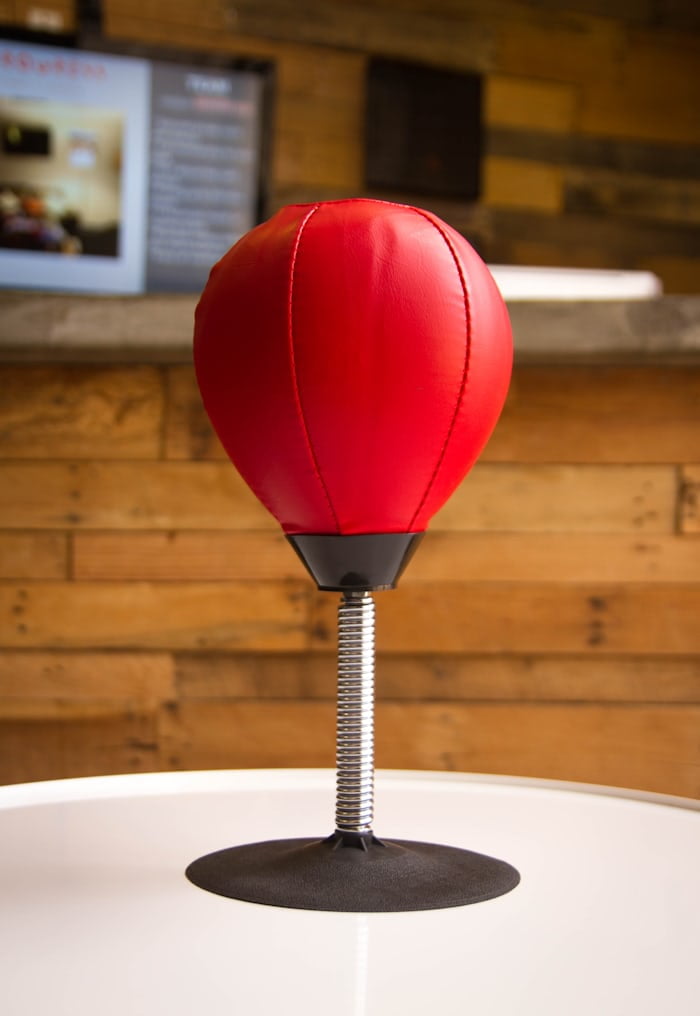
In contrast, the Karate punch, particularly the “reverse punch” or “gyaku-zuki,” emphasizes rotational power and hip involvement.
Power generation in Karate comes from the coordinated movement of the entire body, utilizing the hips, shoulders, and legs to deliver a powerful blow.
The stance in Karate is often wider, providing a stable base for executing strong, singular strikes.
Karate practitioners focus extensively on developing explosive power through rigorous training methods, including kata (forms) and kihon (basics).
When comparing these techniques to those in Boxing and Muay Thai, we observe further variations.
Boxing places a significant emphasis on both speed and power, often delivered in rapid combinations.
Boxers rely on footwork, head movement, and the kinetic chain — transferring energy from the feet through the torso to the fist — to generate powerful punches.
Training methods in Boxing include heavy bag work, pad drills, and sparring, all designed to enhance both speed and power.
Muay Thai, known for its comprehensive striking techniques, incorporates punches, elbows, knees, and kicks.
The power in Muay Thai strikes is derived from the entire body’s rotational movement, similar to Karate but with a broader range of strikes.
Muay Thai fighters train to deliver powerful, decisive blows, often using the clinch to control and strike the opponent effectively.
Speed in Muay Thai is developed through consistent practice of combinations and conditioning exercises.
In essence, each martial art offers unique approaches to developing power and speed in their striking techniques.
Wing Chun prioritizes efficiency and rapid succession of strikes, Karate emphasizes explosive, singular punches, while Boxing and Muay Thai focus on combinations and full-body involvement.
The differences in training methods and body mechanics reflect the diverse strategies employed in each martial art.
Defensive and Offensive Capabilities
When evaluating the defensive and offensive capabilities of Wing Chun and Karate punches,
it becomes clear that each martial art embodies unique principles and techniques.
Wing Chun prioritizes close-range combat and rapid, successive strikes.
Its defensive approach is characterize the simultaneous execution of blocks and counter-attacks.
The Wing Chun punch, often deliver from a vertical fist position, emphasizes speed and directness, allowing practitioners to maintain a tight guard.
The use of defensive postures in Wing Chun is integral, with techniques like the “Tan Sau” and “Bong Sau” serving to deflect and neutralize incoming attacks while setting up immediate counter-strikes.
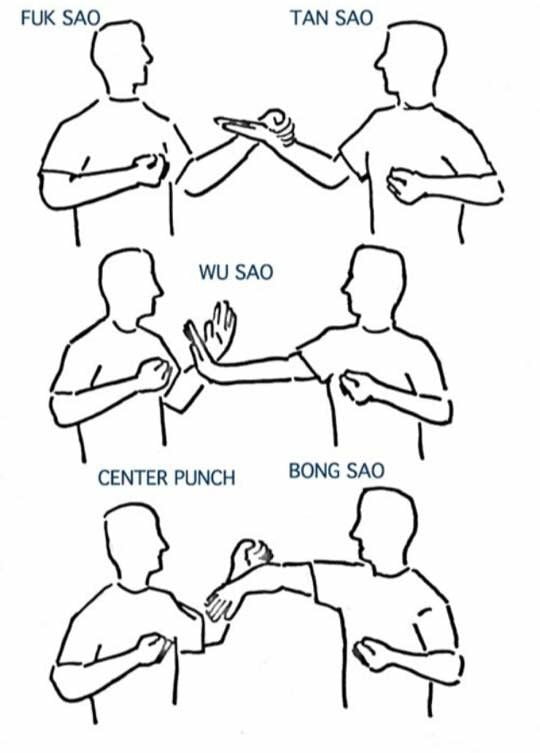
In contrast, Karate employs a more varied range of stances and techniques, which include both linear and circular motions.
The traditional Karate punch, or “Tsuki,” is typically execute from a longer range compared to Wing Chun.
Karate’s defensive strategies incorporate a combination of hard and soft blocks.
such as the “Gedan Barai” (downward block) and “Age Uke” (rising block).
These blocks are design to create openings for powerful counter-attacks.
The offensive capability of Karate is further enhanced by its emphasis on precision and the generation of maximum force through techniques like the “Kime,”
which involves a focus and explosive delivery of power.
Comparatively, in Boxing, the defensive strategies are heavily reliant on footwork, head movement, and parrying.
Boxers often use a “cover-up” defense, where the arms are use to shield the head and torso.
The offensive combinations in Boxing are fluid and continuous, focusing on various punches such as jabs, crosses, hooks, and uppercuts.
The defensive and offensive interchange is seamless, with an emphasis on evasion and counter-punching.
Taekwondo, on the other hand, is known for its dynamic kicking techniques.
but also incorporates hand strikes and defensive maneuvers.
The defensive posture in Taekwondo includes high guards and evasive movements.
while its offensive strategy often involves rapid combinations of kicks and punches.
aiming to overwhelm the opponent with speed and agility.
Overall, the defensive and offensive capabilities of Wing Chun and Karate punches demonstrate distinct philosophies and techniques.
Each martial art offers unique approaches to blocking, counter-attacking.
and maintaining defensive postures.
which are further complement the special strategies observing in other martial arts like Boxing and Taekwondo.
Training Methods and Drills
Training methods and drills play a crucial role in developing effective punching skills in various martial arts.
In Wing Chun, practitioners focus on developing speed, precision,
And structure through repetitive drills and the use of special equipment.
One of the primary tools in Wing Chun training is the wooden dummy, or “Mook Yan Jong.”
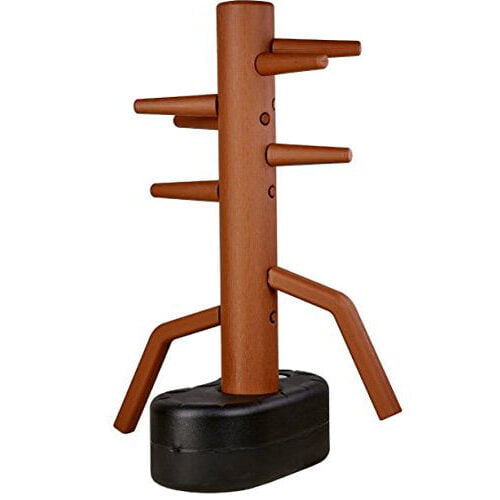
This apparatus helps students practice their angles, timing, and body mechanics.
The wooden dummy drills emphasize coordination, fluidity.
and the ability to deliver rapid consecutive strikes.
a hallmark of Wing Chun punching techniques.
Karate, on the other hand, use the makiwara board as a fundamental training tool.
The makiwara is a striking post that helps Karateka condition their fists and develop proper alignment and power in their punches.
Through repeated strikes against the makiwara, practitioners reinforce their stance, hip rotation.
and the kinetic chain of motion required for powerful punches.
Karate drills often include kata (pre-arranged forms) and kumite (sparring) to integrate these skills dynamically.
Comparatively, other martial arts adopt different approaches to punching training.
Boxing, for instance, relies heavily on pad work.
where a coach or partner holds focus mitts for the boxer to strike.
This method allows for real-time feedback on accuracy, speed, and power.
and it simulates the movement and unpredictability of an opponent.
Muay Thai also employs pad work, with an emphasis on combining punches with other strikes like elbows, knees, and kicks.

making it a versatile and dynamic training approach.
Each martial art has its unique methodology for honing punching techniques.
tailored to its specific principles and combat strategies.
While Wing Chun and Karate emphasize traditional equipment like the wooden dummy and makiwara.
Boxing and Muay Thai prioritize pad work to develop fluid, powerful, and adaptable striking skills.
These varied training methods illustrate the diversity in martial arts and offer valuable insights into the distinct aspects of their punching techniques.
Real-World Applications and Effectiveness
The effectiveness of martial arts techniques, particularly punches.
can be judg by their real-world applications.
In self-defense scenarios, the Wing Chun punch, known for its rapid-fire chain punches, excels in close-quarter combat.
Its straightforward, linear motions are design to incapacitate an opponent quickly.
making it highly effective in street fights where space and time are limiting.
For instance, the Wing Chun punch has been successfully employees in various documents self-defense situations.
primarily due to its speed and precision.
Conversely, the Karate punch, or “tsuki,” is renown for its power and precision.
Utilizing the whole body’s kinetic energy, the Karate punch can deliver devastating force.
This technique is often showcase in competitive settings, such as tournaments.
where practitioners demonstrate their ability to break boards or other hard objects.

In self-defense, the Karate punch’s effectiveness is evident.
when there is ample space to execute the technique fully.
allowing for maximum impact.
When comparing these techniques to other martial arts.
it becomes evident that adaptability and versatility are key factors in their effectiveness.
For example, Muay Thai, known as the “Art of Eight Limbs,” incorporates punches, elbows, knees, and kicks.
making it extremely versatile in both competitive and self-defense situations.
However, its punches, while powerful, may not be as rapid as the Wing Chun chain punches.
Similarly, boxing focuses extensively on hand strikes, offering a blend of speed and power.
but it lacks the defensive and offensive fluidity found in Wing Chun and Karate.
Effectiveness in real-world applications often depends not just on the technique but also on the individual’s ability to adapt under pressure.
Wing Chun’s adaptability in confines spaces and Karate’s power in open spaces highlight their unique strengths.
Ultimately, understanding the context in which these punches are applying can provide insight into their practicality and effectiveness in both self-defense and competitive arenas.
Conclusion: Choosing the Right Punch for You
When comparing the Wing Chun punch with the Karate punch.
several key differences and similarities become evident.
The Wing Chun punch, often characteriz by its straight-line delivery and rapid succession.
focuses on close-range combat and efficiency.
It is designs to minimize movement and maximize speed.
making it highly effective in quick, close-quarters encounters.
On the other hand, the Karate punch emphasizes power and precision.
often involving a more pronounced hip rotation and a focus on delivering a single, powerful strike.
This makes it suitable for both close and mid-range combat situations.
Choosing the right punching technique depends largely on your personal goals, body type, and martial arts philosophy.
If your objective is to develop quick reflexes and efficient short-range strikes.
the Wing Chun punch might be more suitable.
It is particularly advantageous for individuals with a smaller frame or those who prefer a more compact fighting style.
Conversely, if you aim to build strength.
and deliver powerful blows, the Karate punch could be more appropriate.
This technique can benefit practitioners who have a larger build or favor a more dynamic and forceful approach to striking.
Ultimately, the best way to determine which punching technique works for you is to explore and try different styles.
Experiment with the Wing Chun punch, Karate punch.
and other martial arts techniques to see which one aligns with your physical capabilities and personal preferences.
Each style offers unique advantages and can contribute to a well-rounded skill set.
Embracing a diverse range of techniques can provide a comprehensive understanding of martial arts.
and enhance your overall effectiveness in self-defense situations.
Encouragingly, the journey of discovering the right punch is as important as the destination.
By immersing yourself in various martial arts disciplines.
you can gain valuable insights and develop a deeper appreciation for the art of striking.
This exploration will not only help you find the right technique but also enrich your martial arts experience.


